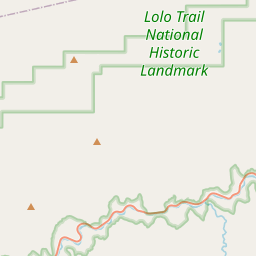Indian Post Office
Historical marker location:






"Walking on Sacred Ground"
1775: The Second Continental Congress establishes the Constitutional Post to provide postal services in the thirteen American colonies. Benjamin Franklin is appointed as the first Postmaster General.
1792: The Postal Service Act is passed, officially establishing the United States Postal Service as a federal agency. It sets the foundation for the organization and regulation of postal operations.
1847: The introduction of prepaid adhesive postage stamps revolutionizes mail delivery, simplifying the process and promoting efficiency.
1860: The Pony Express, a fast mail delivery service, is launched to transport mail between the eastern and western regions of the United States. It becomes famous for its daring riders and swift delivery.
1863: Free city delivery is introduced, allowing mail to be delivered directly to urban households and businesses rather than being picked up from local post offices.
1864: The Postal Money Order system is established, providing a secure way for people to send money through the mail.
1896: Rural Free Delivery (RFD) is implemented, bringing mail delivery to rural areas for the first time. This service significantly improves communication and connects rural communities to the rest of the country.
1971: The United States Postal Service is reorganized as an independent agency within the federal government, operating as the USPS. It is no longer directly controlled by the Postmaster General.
1974: The USPS introduces the ZIP (Zone Improvement Plan) Code system, which assigns unique codes to geographic areas to improve mail sorting and delivery efficiency.
1997: The USPS launches its website, usps.com, providing online access to postal services, tracking, and information.
2001: Following the 9/11 terrorist attacks, the USPS faces security challenges and undergoes significant changes to enhance mail screening and protection.
2013: The USPS announces the end of Saturday mail delivery for regular letters and reduces delivery to five days a week.
Present: The USPS continues to be a vital service, handling billions of pieces of mail annually and adapting to changes in technology, communication, and the shipping industry. It plays a crucial role in connecting people, facilitating commerce, and serving as a backbone of the American communication infrastructure.
This timeline provides an overview of key milestones in the history of the USPS, which has played a crucial role in facilitating communication and connecting communities throughout the United States for over two centuries.
The state's first female governor was elected in 1990. Her name was Cecilia M. "Cec" Andrus, and she was the wife of former governor and US Secretary of the Interior, Cecil D. Andrus.
European exploration of the area began in the early 19th century, with fur trappers and traders from companies like the Hudson's Bay Company venturing into the region. The Lewis and Clark Expedition also crossed through Idaho County in 1805, leaving behind written records of their encounters with the Native American tribes.
Idaho County was officially established in 1864, during the gold rush period in the Pacific Northwest. The discovery of gold in the Elk City area attracted miners from all over the world, leading to the rapid growth of settlements and the development of mining towns. Idaho County became one of the most important gold mining regions in Idaho, with towns like Warren and Florence experiencing boom and bust cycles as the mining industry fluctuated.
In addition to mining, the timber industry also played a significant role in the economic development of Idaho County. The abundant forests provided valuable resources for lumber and wood products, fueling the growth of sawmills and logging operations. Today, Idaho County has a diverse economy that includes agriculture, tourism, and outdoor recreation, all building upon the region's rich history and natural resources.
Idaho County Timeline
This timeline provides a condensed summary of the historical journey of Idaho County, Idaho.
- 1805: Idaho County was explored by the Lewis and Clark expedition.
- 1861: Idaho County was established as a county in the Idaho Territory.
- 1875: The county seat was moved from Florence to Mount Idaho.
- 1904: The present-day county seat, Grangeville, was established.
- 2000: The population of Idaho County reached 15,511.